RARE! WWII 1945 Lt. Rix B-29 Navigator XXI Bomber Command KOIZUMI Night Raid Target Map No. 6B (MINT CONDITION)

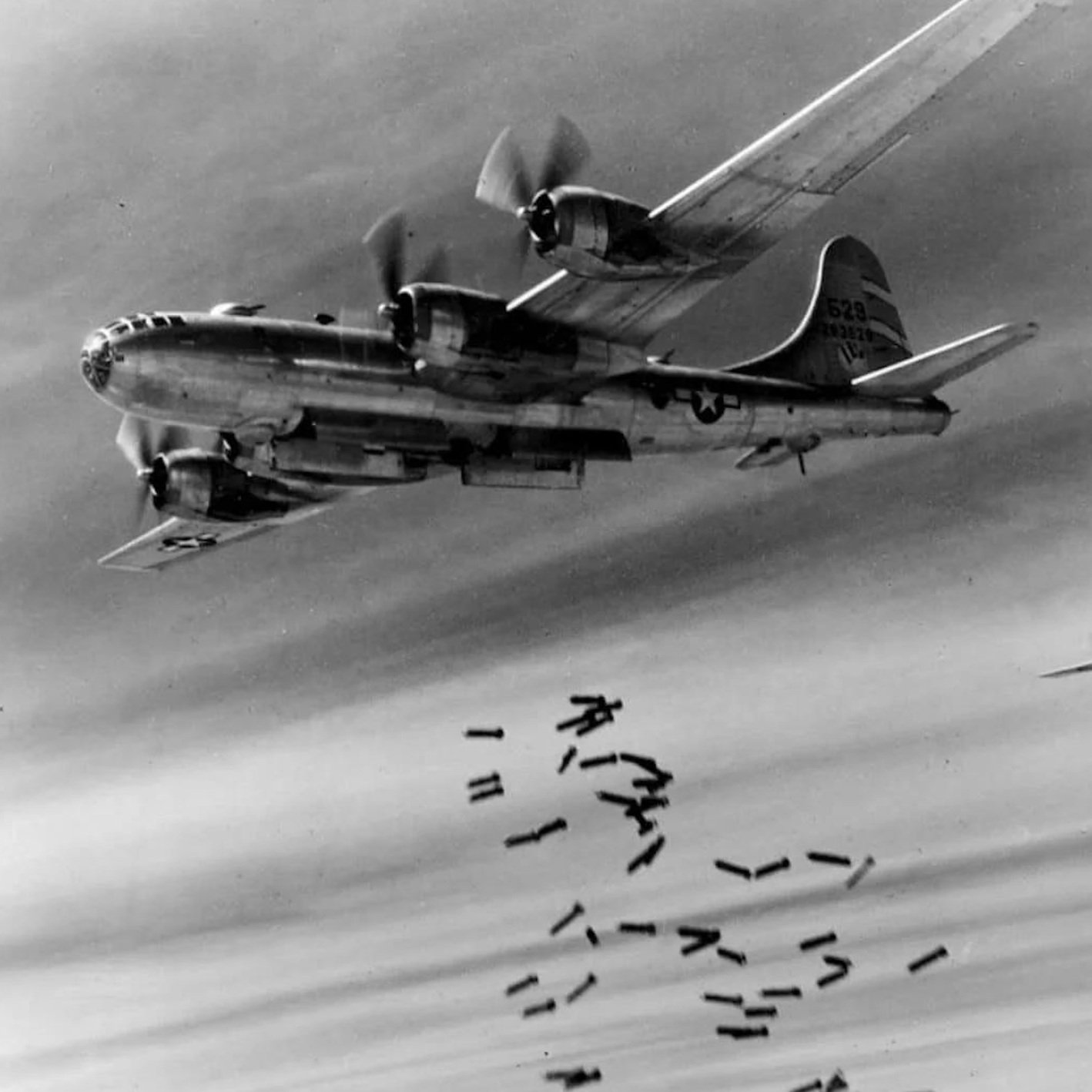
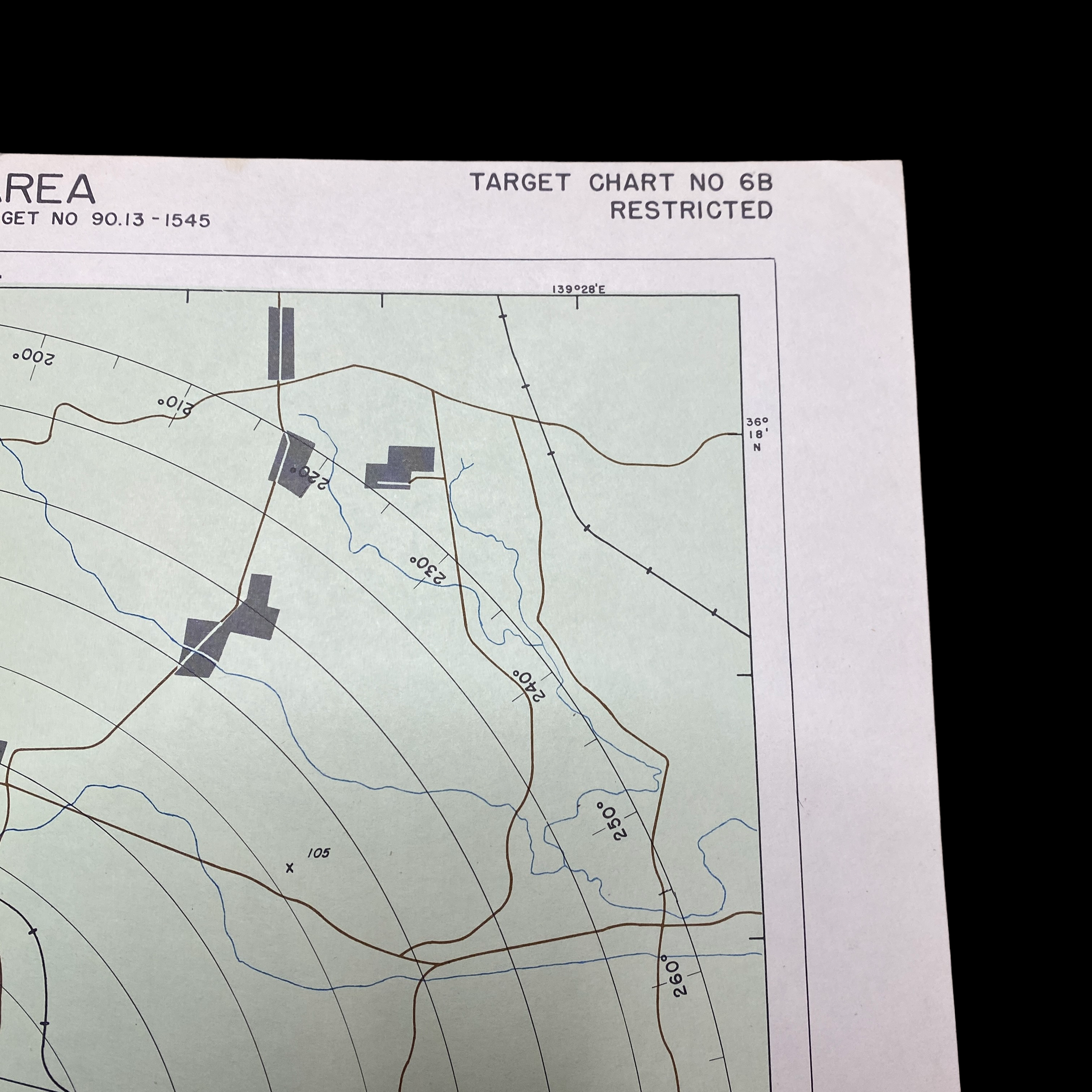




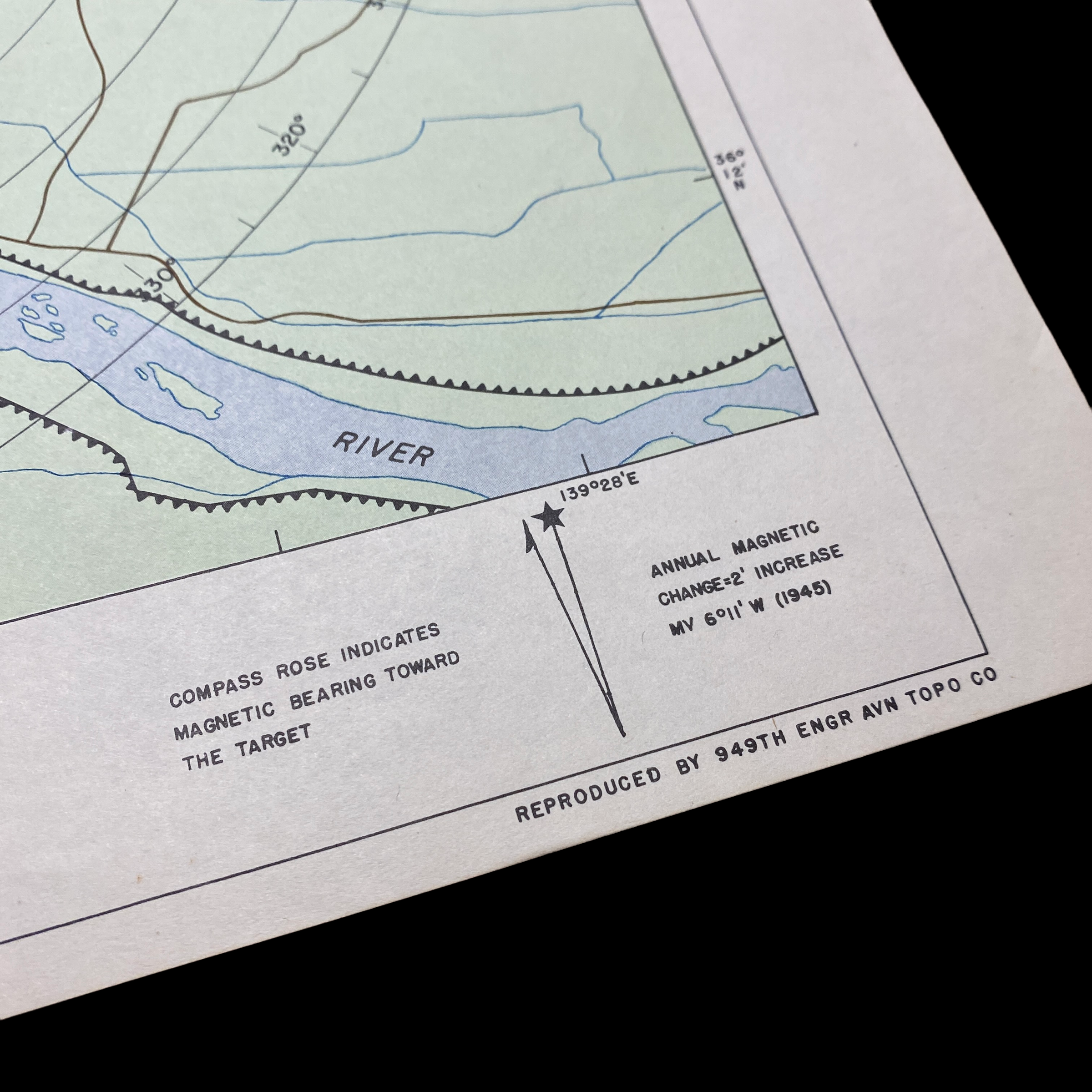
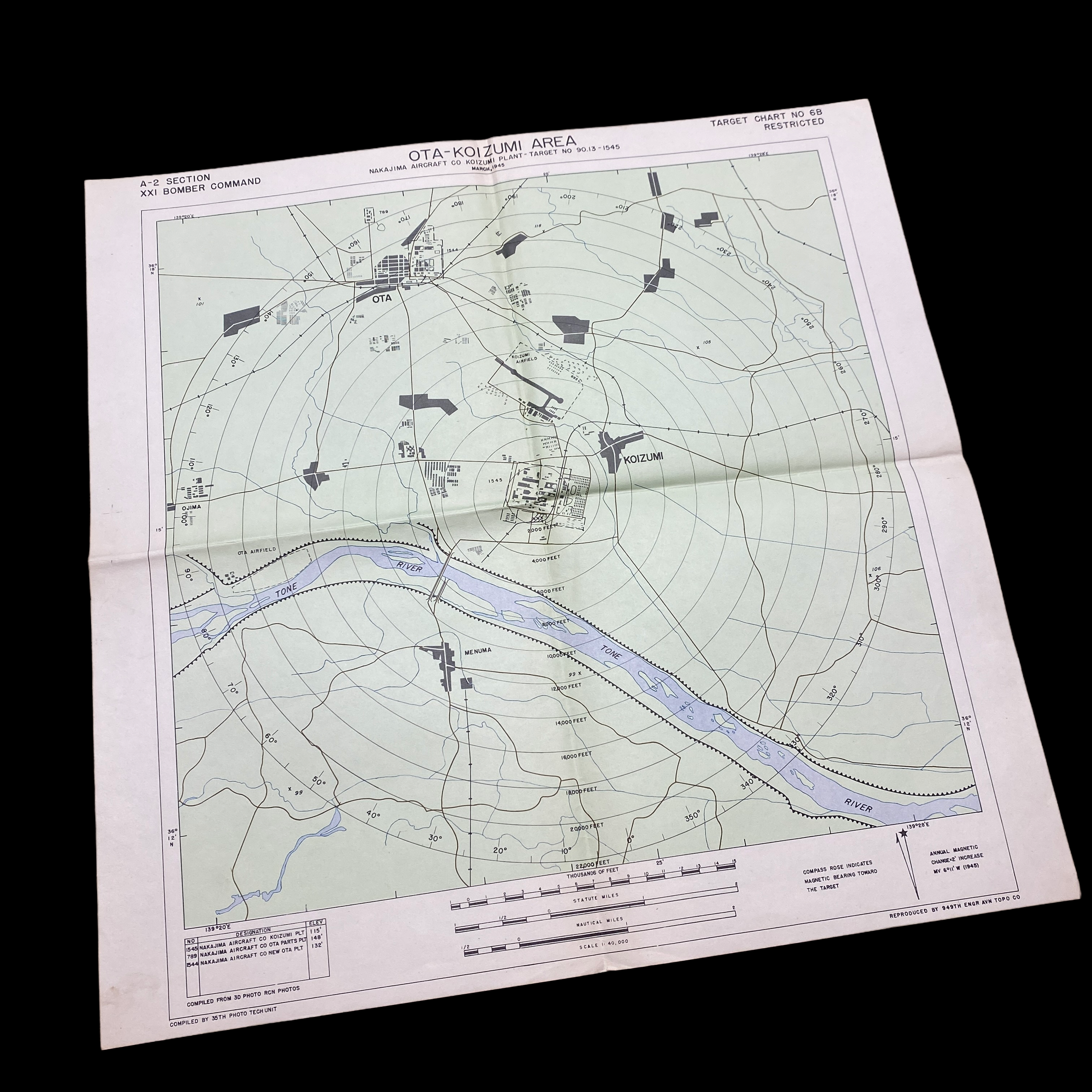
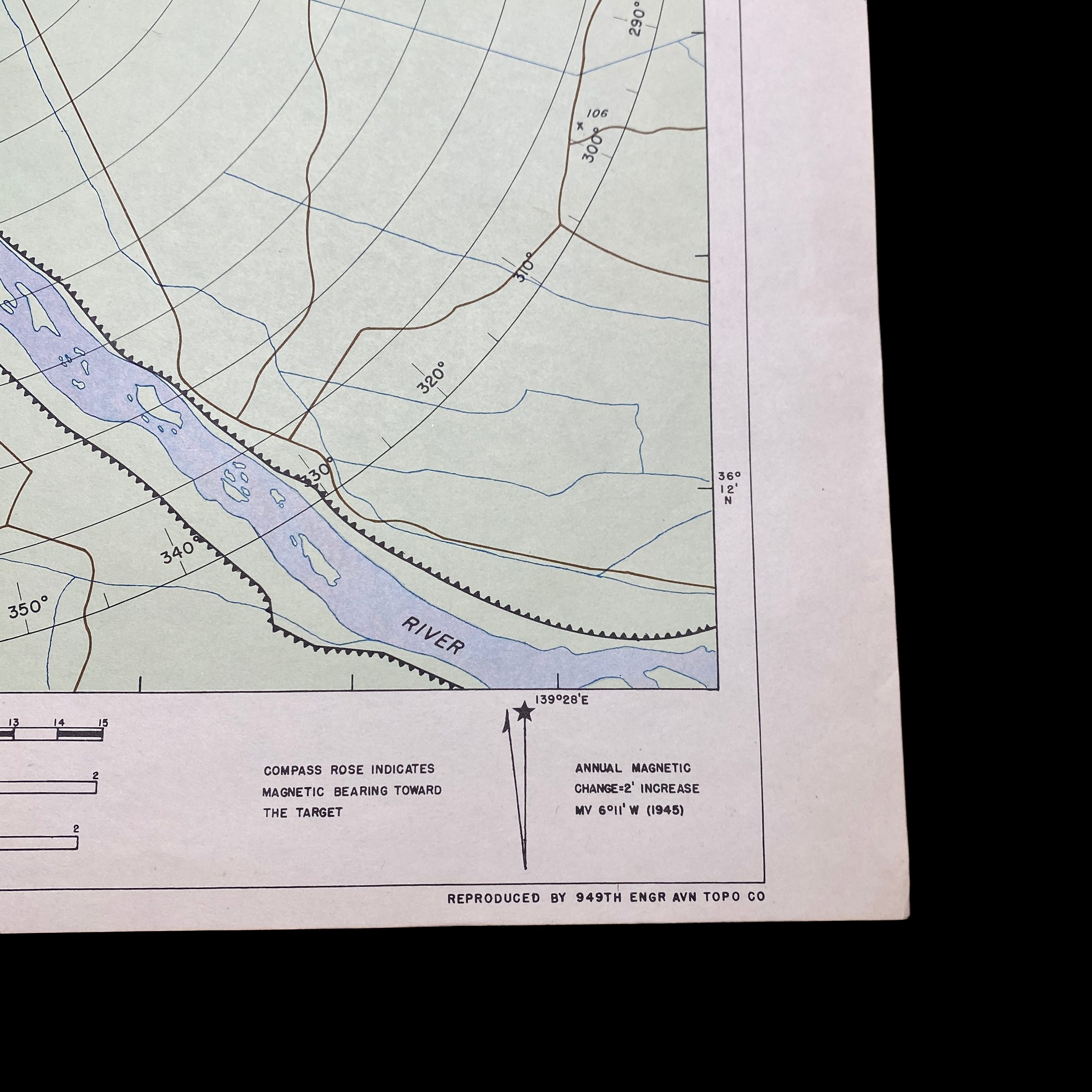
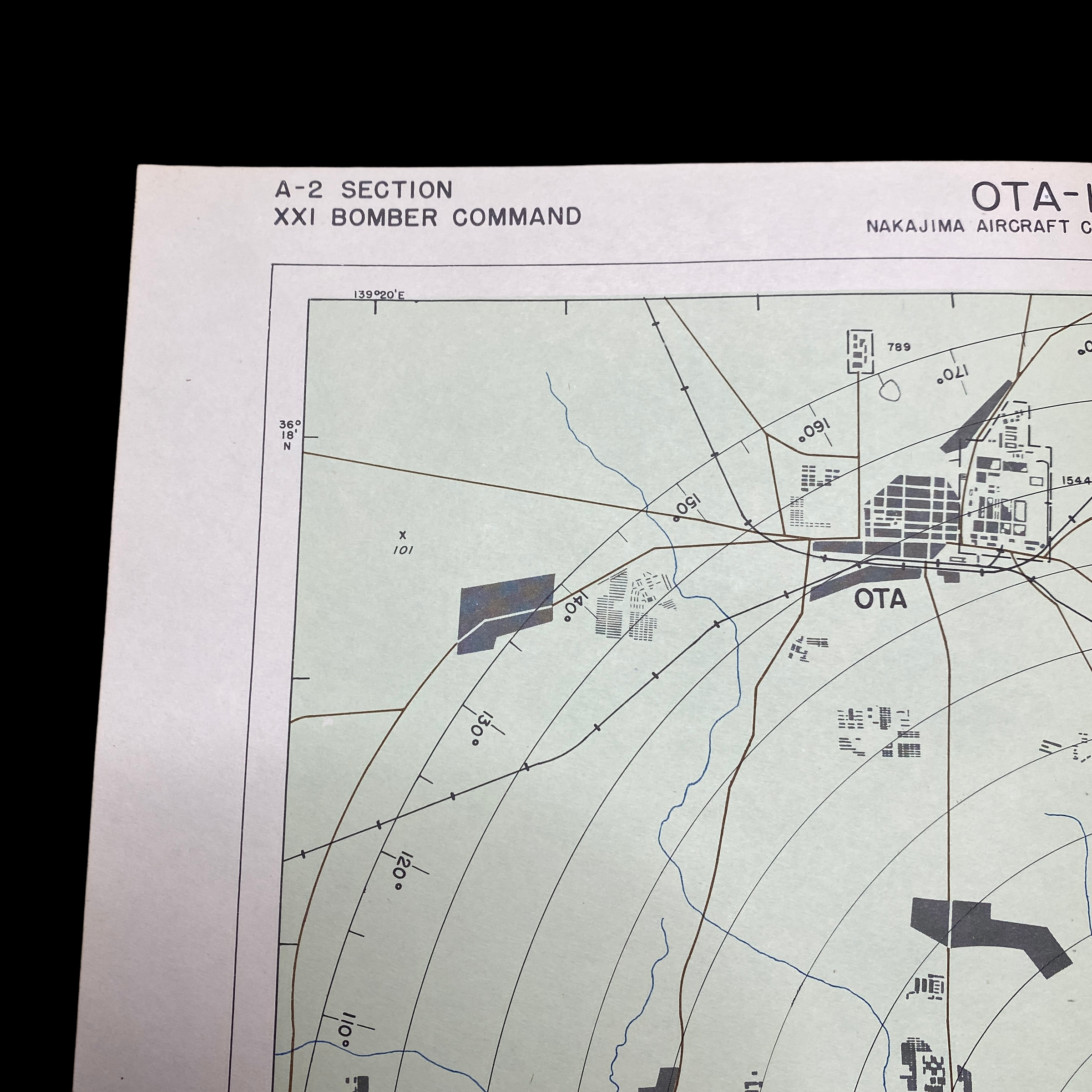
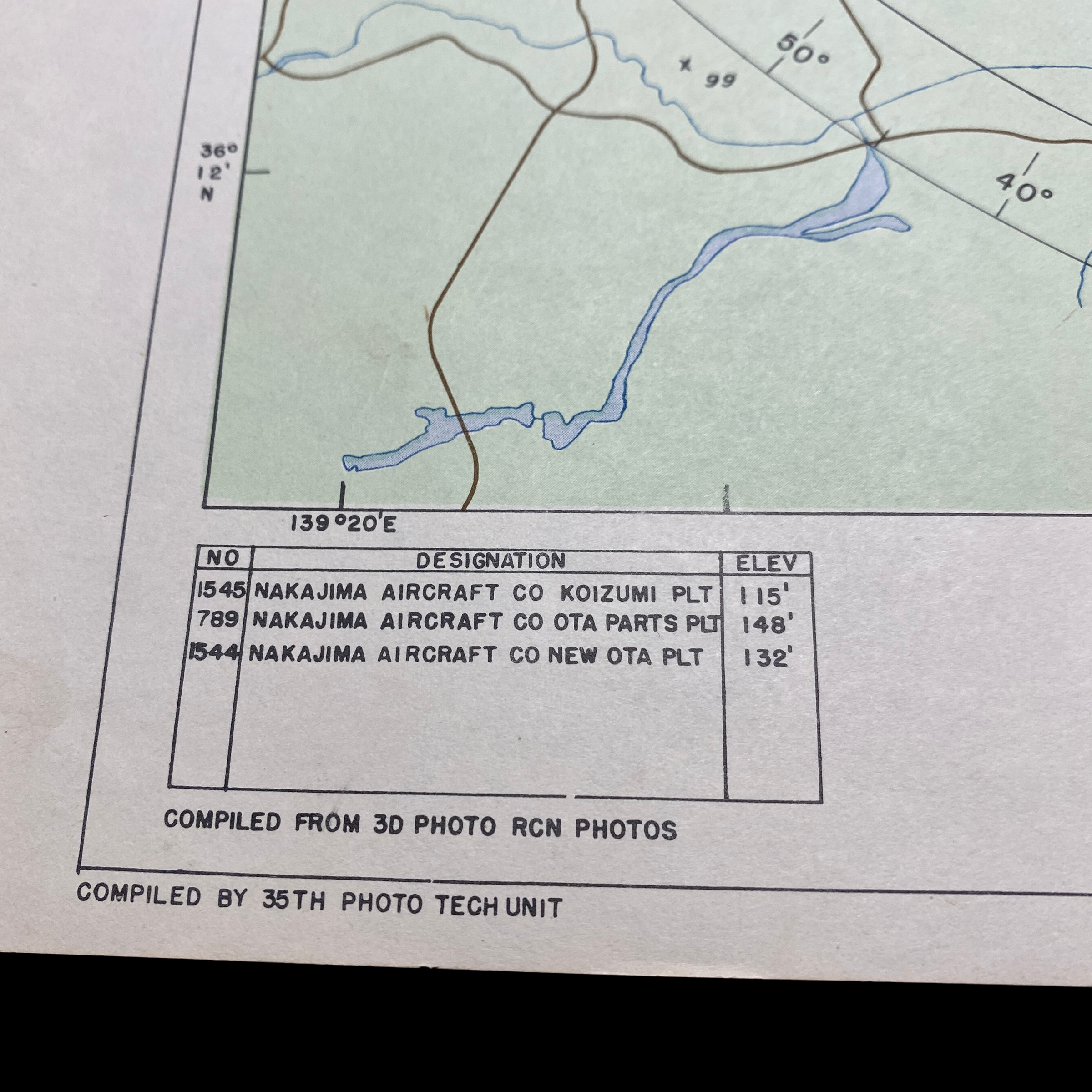
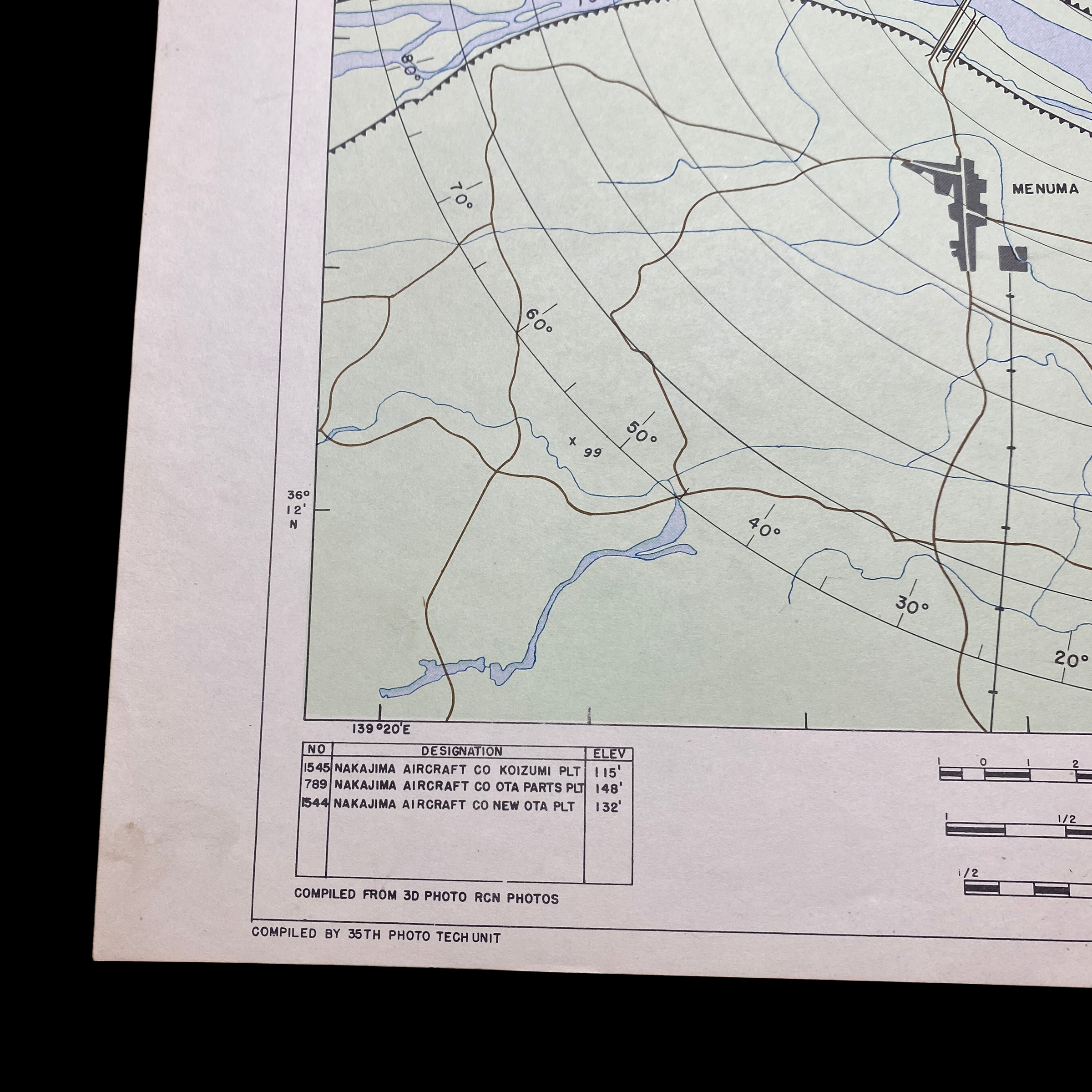
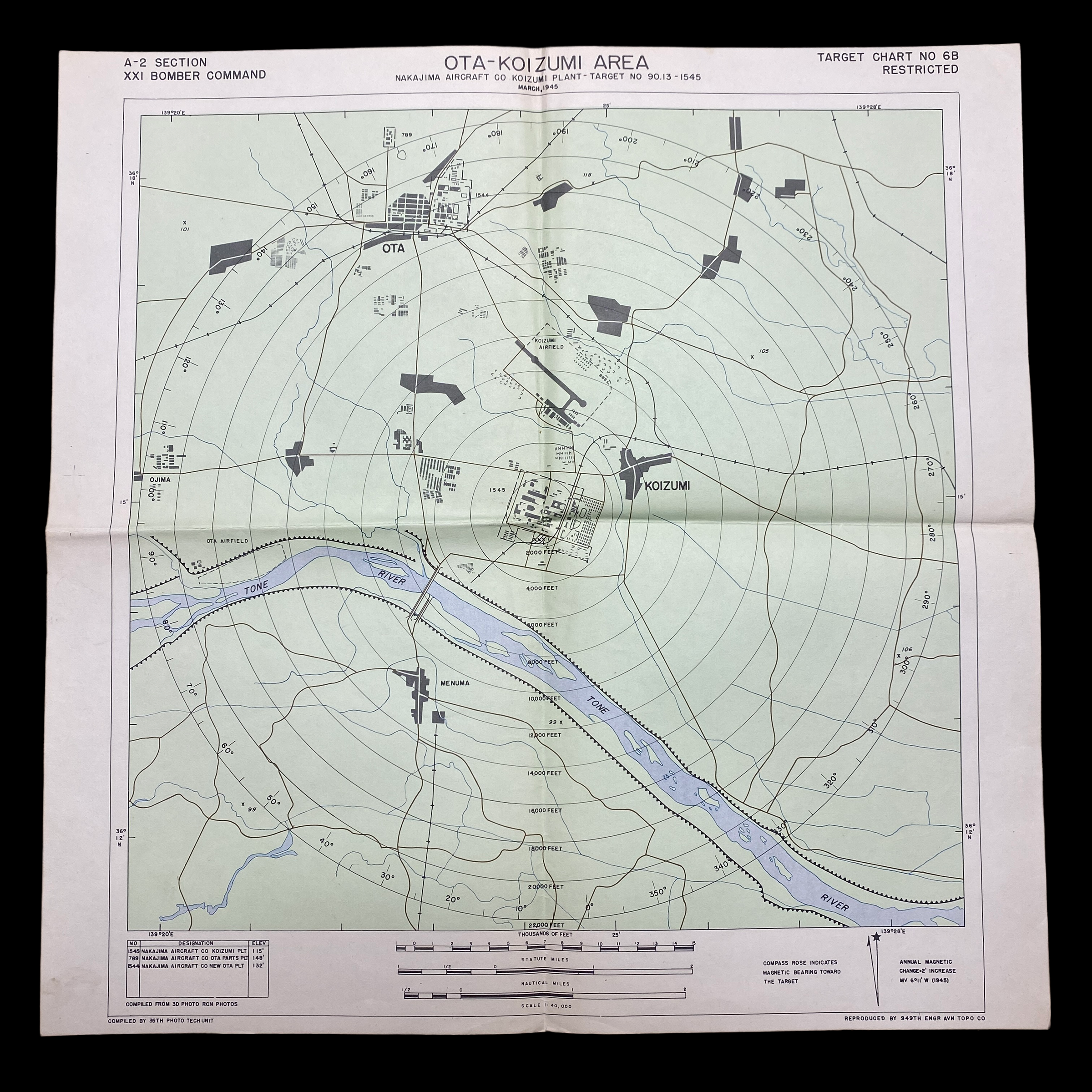
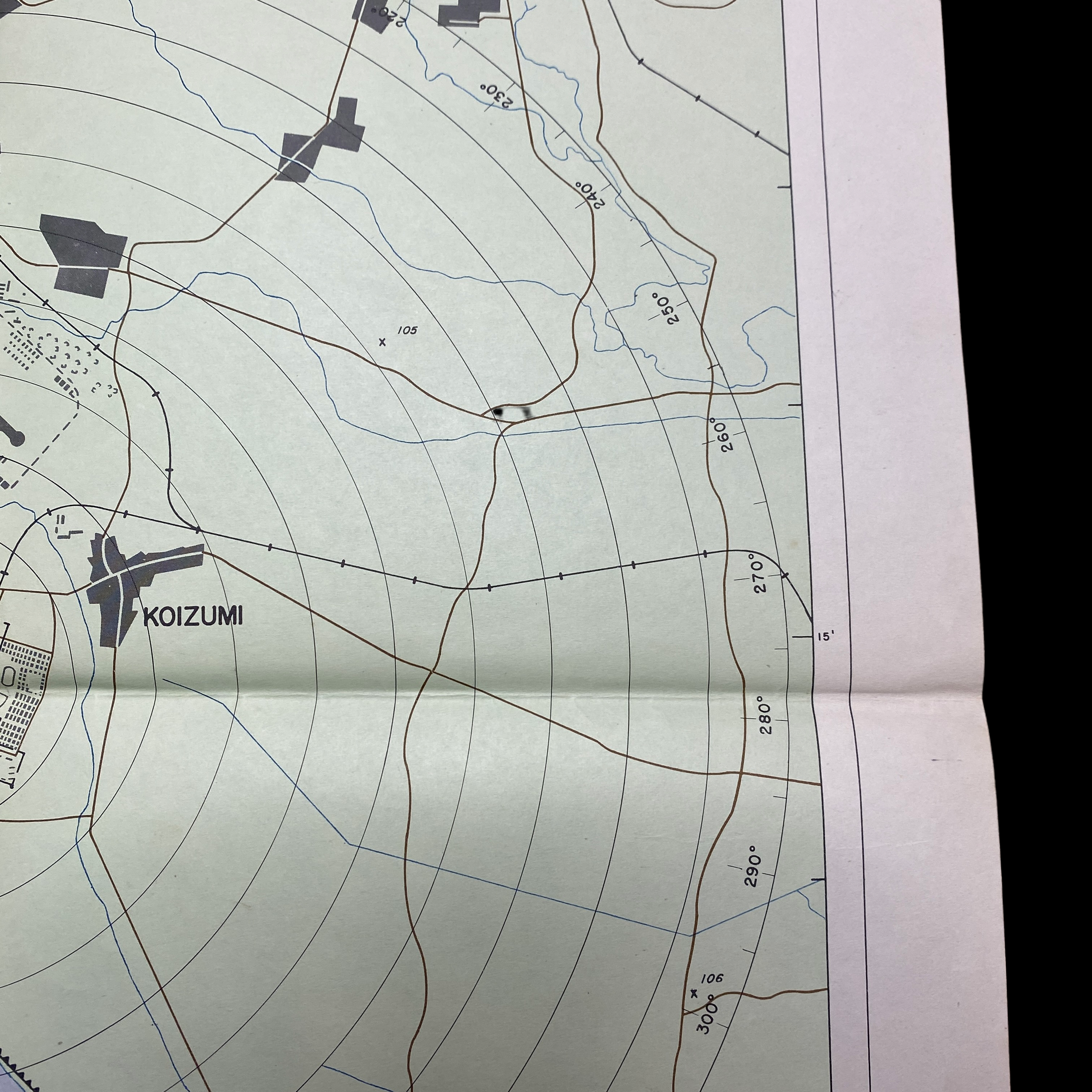
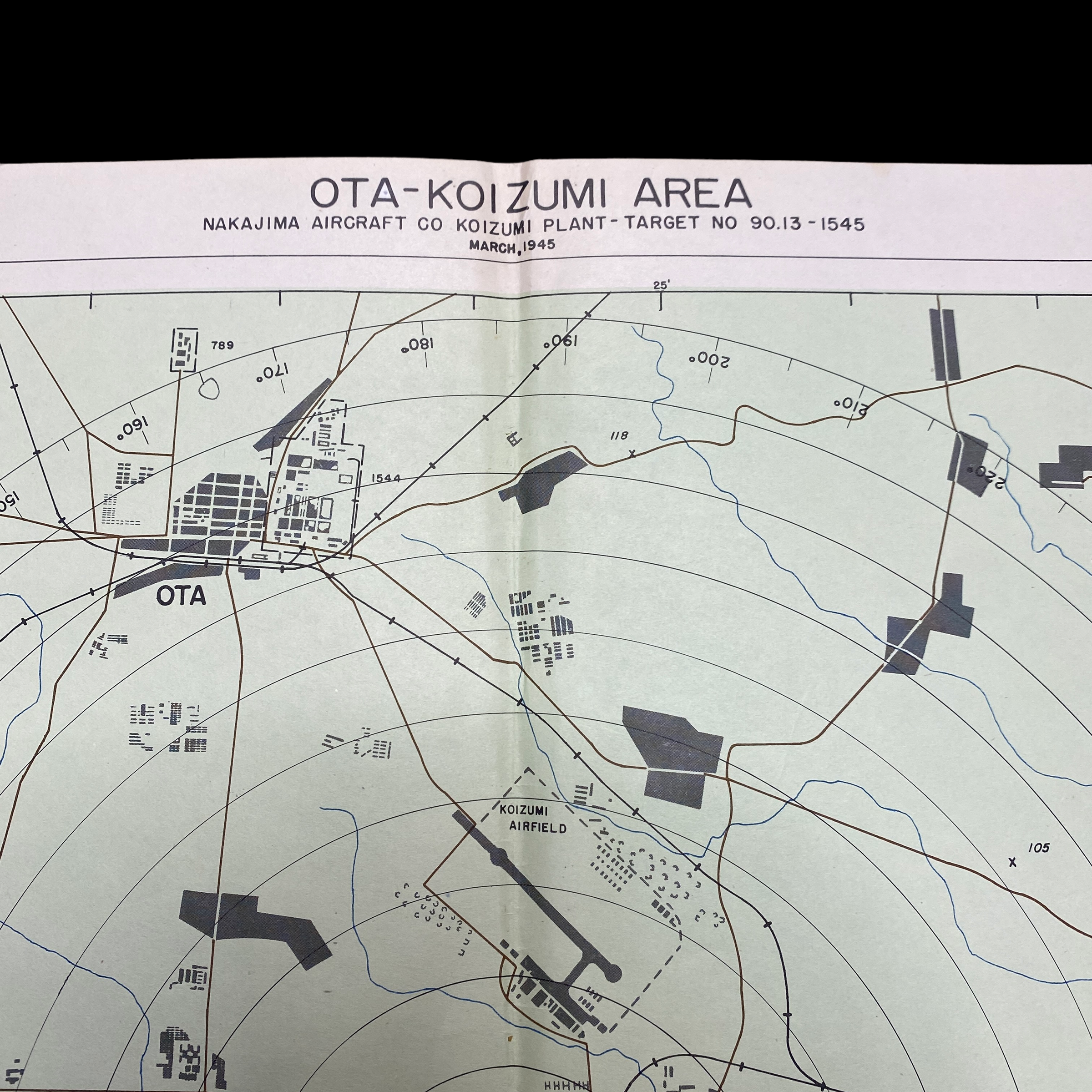
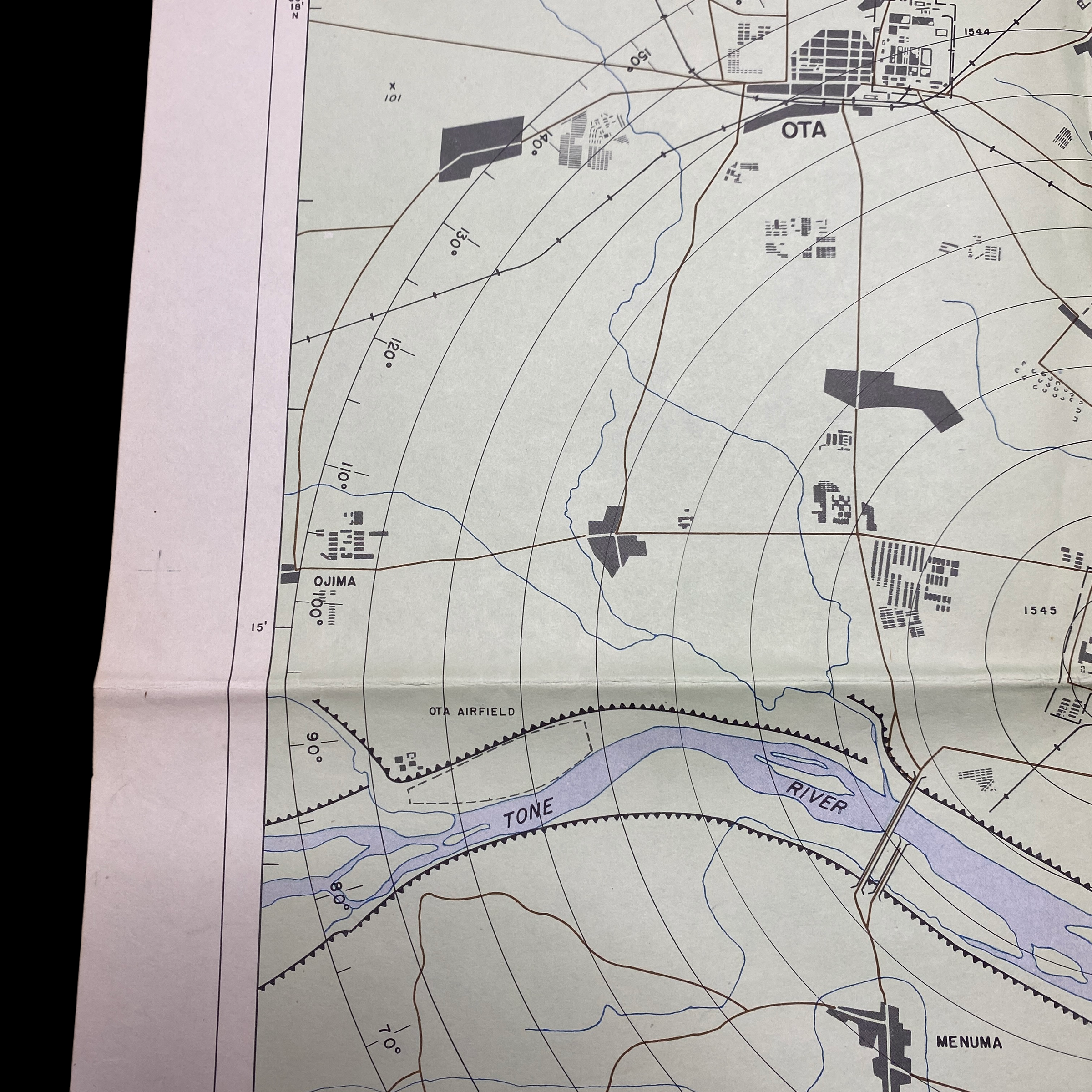
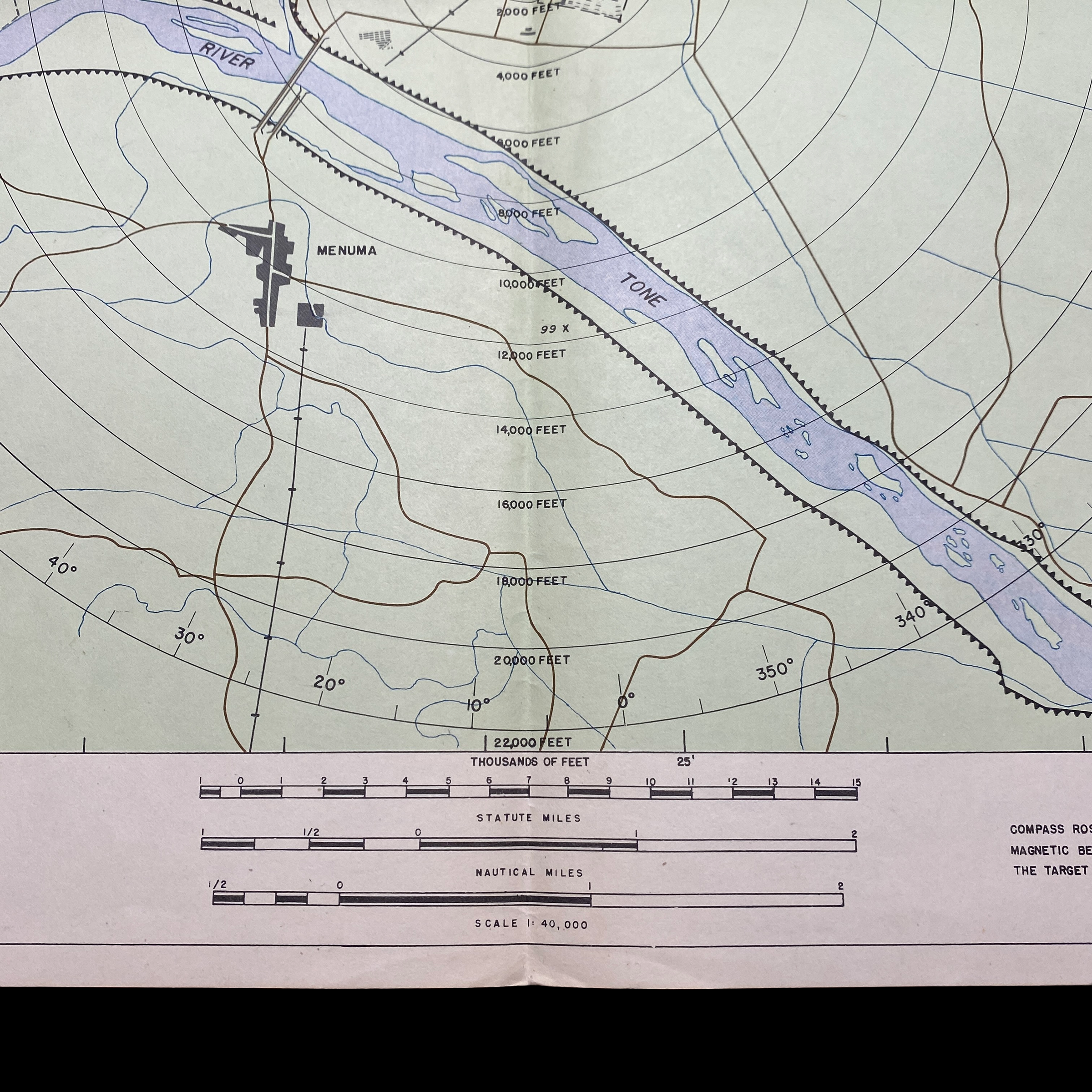
RARE! WWII 1945 Lt. Rix B-29 Navigator XXI Bomber Command KOIZUMI Night Raid Target Map No. 6B (MINT CONDITION)
Comes with hand-signed C.O.A.
These XXI Bomber Command target map rarely come up for sale in the public sector. This is a once in a timeline chance to own a piece of B-29 WWII history.
***This specific TARGET CHART was used on the XXI Bomber Command PRECISION RAID on April 3rd 1945.
This incredibly scare and museum-grade ‘RESTRICTED’ WWII XXI Bomber Command (20th Air Force) TARGET CHART was used during the USAAF long-range bombardment operations, against Japan until mid-July 1945. The XXI Bomber Command was headquartered at Harmon Field, Guam, in the Mariana Islands.
Titled “OTA-KOIZUMI AREA” version of this A-2 SECTION - TARGET CHART NO. 6B were produced in limited quantities with previous aerial reconnaissance mission photos by the 30th Photo Reconnaissance Squadron.
This navigators and bombardier chart map was specifically creating using the most updated military intelligence in order to give B-29 Superfortress aircraft the most accurate target information. This was done for fast and effective target identification as well as accurate navigation and bomb/incendiary accuracy. These target charts were handed to B-29 crews during the target mission briefing and were then carried on the B-29 aircraft to used during the raid itself.
This OTA-KOIZUMI AREA, Japan target chart was used by WWII 1st Lieutenant Cecil Rix who served as a B-29 Bombardier Navigator in the Pacific Theater as well as a Radar Observer on Saipan and Guam during the later part of WWII.
This specific TARGET CHART was used on the XXI Bomber Command PERCISSION RAID on April 3rd 1945. A few attacks on Japanese cities were conducted during the Battle of Okinawa. LeMay ordered for the night of 3 April three one-wing attacks against Mitsubishi's Shizuoka engine plant, Nakajima's Koizumi assembly plant, and the Tachikawa aircraft engine plant. Command headquarters specified the mean point of impact, bombing altitude, and bomb load; each wing was allowed to choose its own method of lighting the target. Again, the results in each instance were negligible. The command just wasn't equipped for night precision bombing; specifically, it needed target marker bombs, such as the 1,000-pounders used by the RAF, and reflex optic bombsights. Lacking the proper equipment, LeMay abandoned the experiment. For a while B-29's were kept busy enough with airfield strikes in support of the battle for Okinawa,* but between trips to Kyushu they were sent occasionally against the aircraft industry in daylight missions.
*What makes this specific edition of the target chart very rare is the lower left key noting vital Japanese aerial targets and key military and industrial building/factories. The key translates to the numbered building on the map for accurate target identification…and even shows that specific targets elevation. This was valuable information as it could be used on multiple missions raids based on the carrying primary targets.
This specific target map of OTA-KOIZUMI AREA labels the THREE SEPERATE NAKAJIMA AIRCRAFT COMPANY PLANTS.